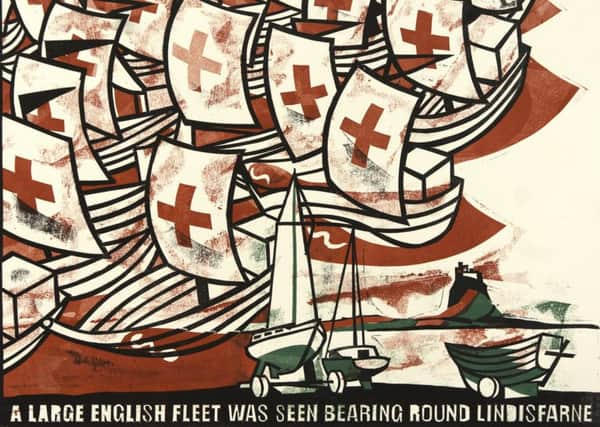The Red Hall '“ inhabitants fight for town under siege


PREVIOUSLY: In 1296, King Edward I of England invades Scotland, starting with Berwick. The alarm bells interrupt the wedding of Isabella, daughter of William, one of the Flemish merchants based in Berwick’s Red Hall.
The priest’s voice faltered. William the Fleming put his hand on his sword, the bridegroom started to his feet and fair Isabella clung to his side.
Advertisement
Hide AdAdvertisement
Hide Ad“Come, children,” said the merchant. “We must get to the Hall. This is no time for a ceremony: there’ll be a happier day for your wedding.” They left in grim silence, each man grasping his sword.
The ramparts were crowded with armed citizens, and a large English fleet was round Lindisfarne. In a few hours the vessels entered the river and began a furious attack.
Their assault was returned by the inhabitants, sworn to die for liberty. The battle raged for hours and the Tweed looked like a sheet of blood.
Just as the conflict reached new heights, the Bell Tower rang out its sounds of death.
Advertisement
Hide AdAdvertisement
Hide AdEdward, at the head of 35,000 troops, had crossed the river at Coldstream. His army were making camp at the foot of Halidon Hill. A detachment descended on the town to support the fleet. They began a resolute attack from the north, while most of the Berwick garrison was pinned down with the ships.
The besieged fought with the courage of lions. The fleet was defeated and driven from the river and the army was beaten back; the men who opposed it even more desperate.
But there was treachery in the town. To this day, nobody knows who did the deed. But on Good Friday, 1296, the gates were opened.
The English army rushed into the streets. Wildly, the work of slaughter began.
Advertisement
Hide AdAdvertisement
Hide AdThe inhabitants defended every house, every foot of ground. Mild mothers and gentle maidens fought with the fury of hungry wolves, and delicate hands did deeds of carnage.
The war of blood raged from street to street as the English army poured on like a ceaseless stream.
NEXT WEEK: Bloody aftermath…
Adapted by Joe Lang and illustrated by Morag Eaton. Buy the Wilson’s Tales Revival Editions, £8.50, at booksellers or www.wilsonstales.co.uk. Illustrations at Foldyard, Bridge Street (www.foldyard.co.uk).